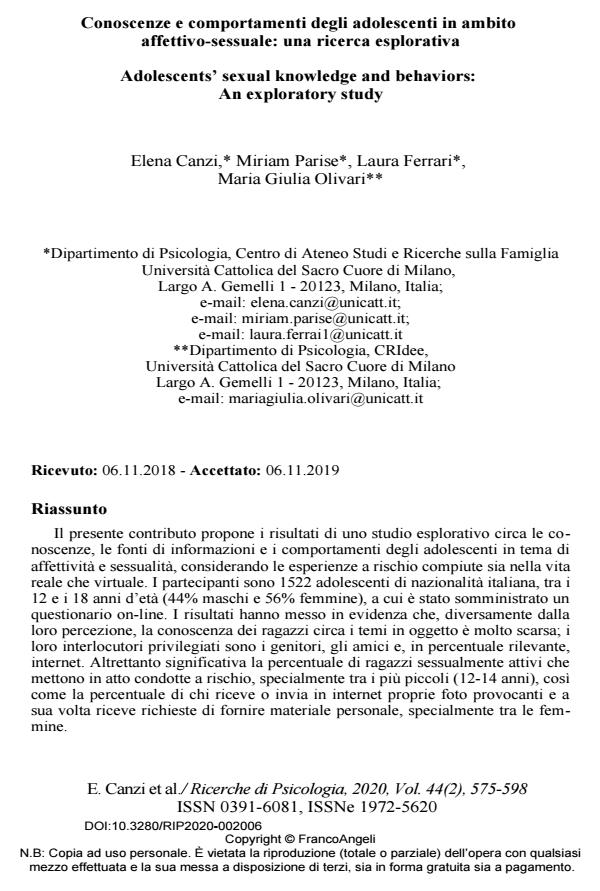Adolescents’ sexual knowledge and behaviors: An exploratory study
Journal title RICERCHE DI PSICOLOGIA
Author/s Elena Canzi, Miriam Parise, Laura Ferrari, Maria Giulia Olivari
Publishing Year 2020 Issue 2020/2
Language Italian Pages 24 P. 575-598 File size 278 KB
DOI 10.3280/RIP2020-002006
DOI is like a bar code for intellectual property: to have more infomation
click here
Below, you can see the article first page
If you want to buy this article in PDF format, you can do it, following the instructions to buy download credits

FrancoAngeli is member of Publishers International Linking Association, Inc (PILA), a not-for-profit association which run the CrossRef service enabling links to and from online scholarly content.
This work presents the results of an exploratory study on adolescents’ sexual and relational-emotional knowledge, sources of information, and behaviors. The study also investigates adolescents’ risky experiences in both real and vir-tual life. The sample consists of 1522 adolescents of Italian nationality with age range between 12 and 18 years (44% males and 56% females), who completed an on-line self-report questionnaire. Results show that, contrary to their percep-tion, adolescents’ knowledge about sexuality and emotionality is rather scarce. They refer primarily to parents, friends, and, to a considerable extent, to the In-ternet to get information about sexuality. In addition, the percentage of sexual-ly active adolescents who report to enact risky behaviors, especially among the youngest (12-14 years), is noteworthy. Finally, a consistent percentage of ado-lescents report to receive or send "sensual" photos through the Internet and to receive requests to provide personal material/information by strangers.
Keywords: Adolescence, sexual risky behaviors, relationships, sexuality, knowledge about sexuality, source of information about sexuality.
Elena Canzi, Miriam Parise, Laura Ferrari, Maria Giulia Olivari, Conoscenze e comportamenti degli adolescenti in ambito affettivo-sessuale: una ricerca esplorativa in "RICERCHE DI PSICOLOGIA " 2/2020, pp 575-598, DOI: 10.3280/RIP2020-002006